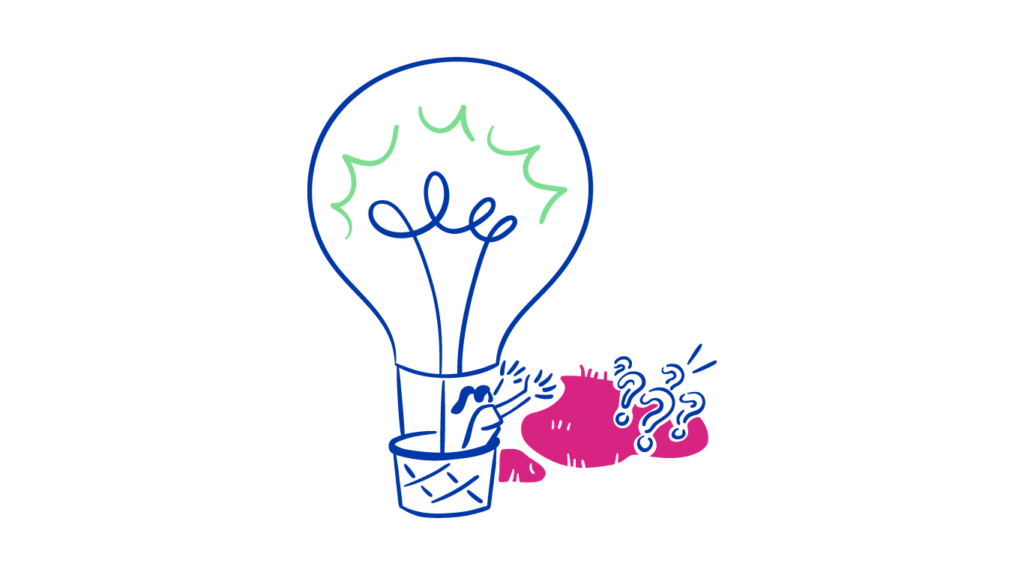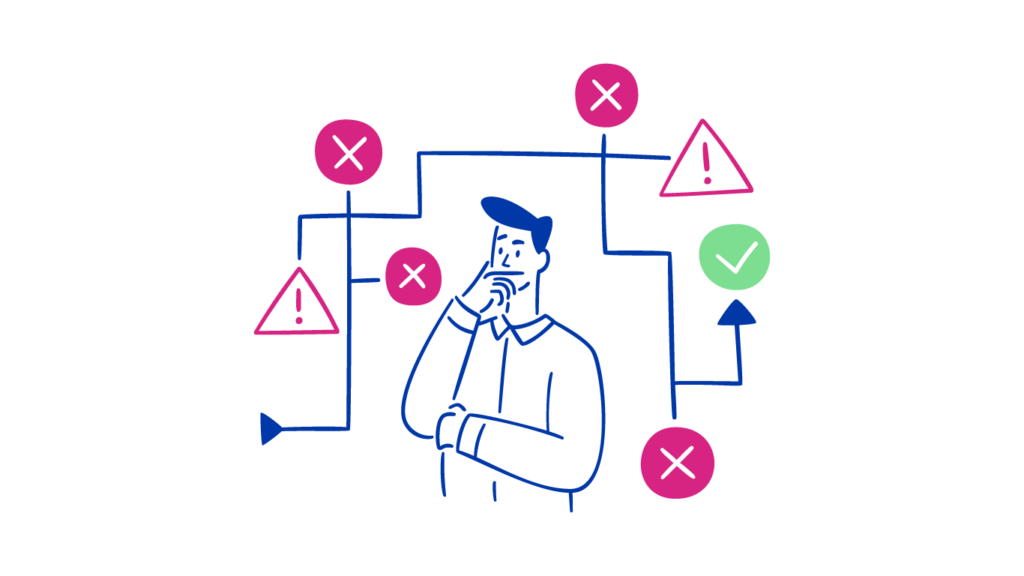Solution Selling Vs Consultative Selling: What Is The Difference?

If you are a salesperson with ambitions to rise to the top, there are so many effective sales methods to choose from, it can seem like a minefield! Two of the big players are solution selling and consultative selling. Some sales teams mix up the two, but they are two distinct approaches.
Below, we’ll take a look at solution selling vs consultative selling: which one of the two is more appropriate for B2B (business-to-business) customers, how they relate to your customer interactions and how to choose the best for driving results.
Let’s explore…
What is solution selling?
First, let’s take a look at solution selling. The history of solution selling stems back to the 1970s. Using this approach, the salesperson focuses on selling a solution to the customer’s needs by matching a product or service to them.
Solution selling allows sales reps to sell with empathy and build a strong relationship with the customer to deeply understand their wants, needs and concerns. This methodology is often used by members of a sales team that sell customised products and packages.

The solution selling sales process
There are six key steps to solution selling. They are:
- Prospect. Find a prospect who may be facing an issue that your product or service can solve.
- Qualify. Understand who is involved in the decision-making process.
- Discover. Get to grips with the prospective customer’s needs and then propose a solution as part of your product or service offering.
- Add value. Educate the person you’re speaking with about the product or service and develop them as a “customer champion”. They can then “sell” the solution internally to the relevant stakeholders and decision-makers.
- Present. Offer a custom solution to meet their needs, demonstrating a return on investment and value.
- Close. Come to an agreement that meets price points, expectations and budgets for both sides of the table: a win-win deal.
However, it has been argued since roughly 2012 that, sometimes, a solution sales rep can be more irritating to customers than previously thought. Often, the business buyers of today already know what they want and need, which can make the solution selling sales method redundant.
What is the difference between a product and a solution?
Product selling is also known as transactional selling and is focused on immediate gratification and a quick sale to create revenue and meet sales targets. When selling a product, sales reps often focus on the features and benefits of the item or service.
For example, when selling a car as a ‘product’, the sales rep would focus on everything that the car does and some of the benefits to that individual. They would push for a test drive or sale at that point, even if the car wasn’t 100% suited to the customer’s needs.
In the same scenario, a solution seller would look to solve a problem. If the customer had children, perhaps the sales pitch would be somewhat customised to their needs for a big boot, large back seats and child locks. Or maybe the customer needs to switch from an environmentally-unsafe car such as diesel to a more eco-friendly electric vehicle, saving hefty fuel prices and tax costs.
Solution selling example
One of the most common examples of solution selling is SaaS products and service and software platforms. Instead of selling one standalone product for all customers, each B2B customer tends to have different needs. So, the salesperson can customise the solution offered to meet those particular business requirements, instead of selling the entire product as a whole.
Solution selling is used in this instance to understand which features of your product or service are the most relevant, important and appropriate to the customer.
What is consultative selling?
The consultative sales approach focuses on the customer. Prospective clients are now more informed than ever before, which means they don’t need to be told what they need. In fact, this Harvard Business Review article suggests that “customers completed on average nearly 60% of a typical buying decision before even having a conversation with a supplier”.
Instead, one of the consultative selling techniques is listening to their needs and asking open-ended questions and creating a dialogue as part of the sales process. Then, a consultative seller will suggest a solution with all things considered – its focus is on trying to help, rather than trying to sell. Consultative selling is more effective than direct selling and creates a relationship based on expertise with the potential customer.
The consultative selling sales process
The consultative sales approach includes seven steps. They are:
- Research. Research the prospect and their business thoroughly before the initial conversation, to maintain professionalism and show expertise.
- Connect. Connect with the prospect by building credibility.
- Understand. Gain a better understanding of the customer by using an investigative approach and probing questions as part of a two-way dialogue.
- Educate. Educate the prospective customer about any details they may have missed, provide new perspectives or explain a new solution that they may not have been aware of before your call.
- Qualify. Qualify your prospect throughout the conversation to gauge their potential budget, how closely their needs match your solution and what options are available to them.
- Close. Begin to push for the close early on. Having demonstrated a strong understanding of their requirements and matching your solution to their needs, you are ready to push for a product demo, free trial (or another type of conversion).
- Follow up. Follow up with the appropriate action and keep the lines of communication open. Customer success is key to your own success.
What is the difference between consultative selling and solution selling?
While the two sales methodologies may sound similar, there are some distinct differences that make one more effective than the other. Here is a detailed breakdown of solution selling vs consultative selling:
| Factors | Solution Selling | Consultative Selling |
| Sales motivation | Focused on the sale | Focused on trying to help the customer to reach a sales decision only if appropriate — creating customer success is key |
| Focus | Price | Value |
| Customer relationship | Built on authority and expertise | Built on trust |
| Drive | Product-driven | Process-driven |
| Era | The 1970s | The 1980s |
| Sales type | Hard sale | Soft sale |
When to use consultative selling?
Consultative selling is best used in B2B markets in industries where the buyers are already informed about their wants and needs.
In such a complex sales environment, the sales cycle is typically long due to budget constraints, multiple stakeholders and risk-averseness. Often, the consultative approach involves making the customer aware of not only their current pain points but also provides a new perspective or a wider issue. The sales strategy here is to make the customer aware of this and support them in finding the best solution.

When to use solution selling?
Solution selling is a great method to sell with empathy. However, many prospects come with a solution in mind and are simply looking for expert advice to help them make a decision. Solution selling is great for situations where the customer comes to the fore with a specific challenge in mind. Then, the solution seller can find ‘the’ solution to this.
FAQs
How can you develop opportunities for a consultative relationship with a client?
The consultative selling process is used (often) as an inbound sales technique. As an inbound salesperson, you have to quickly demonstrate authority and expertise. Instead of pushing for a sale, ask probing questions to gain information, listen attentively and recommend a solution that meets the customer’s unique requirements.
How to ask consultative selling questions?
Salespeople who adopt the consultative sales strategy should ask the right questions to gain valuable insight and offer a solution. A few go-to questions include:
- If time and money were no object and you had full authority, what would you change about your current system?
- Why isn’t your current solution and/or process working for you?
These questions give the prospective customer the opportunity to go more in-depth about the current issues they’re facing, which allows the consultative salesperson to evaluate the best possible solution.
Keep in mind that one of the keys to this sales methodology is active listening. This is where the salesperson asks questions while demonstrating attentiveness, which helps to build good relationships with customers.
What is a probing question?
Probing questions are typically open-ended and are used to encourage deeper thought on a topic. Instead of a yes or no answer, probing questions allow the customer to explore their own thoughts and feelings about a subject. Examples include, ‘Why do you think that is?’, ‘What do you think is at the root of this problem?’ and ‘How do you know that this is true?’.
Conclusion
In the solution selling vs consultative selling dialogue, it’s important to consider that the former is a part of the latter. Solution selling focuses on identifying the customer’s needs and finding the solution in the form of a product, service or both. Consultative selling incorporates this approach as well, but the focus lies in building a strong relationship with the prospect in the process.
References & further reading
- The 16 Must-Try Prospecting Techniques For Sales
- How Do You Research Prospects Before a Call or Meeting?
- The Simple Guide To Sales Qualification Frameworks
- Consultative Vs Transactional Selling: A Guide For Salespeople
- [Step-by-Step] The Consultative Sales Approach
- Are You Asking These Consultative Selling Questions? You Should Be!
- McKinsey: What’s Wrong With Solution Selling-And How To Put It Right
- What Is Active Listening? How Can I Do It Better?